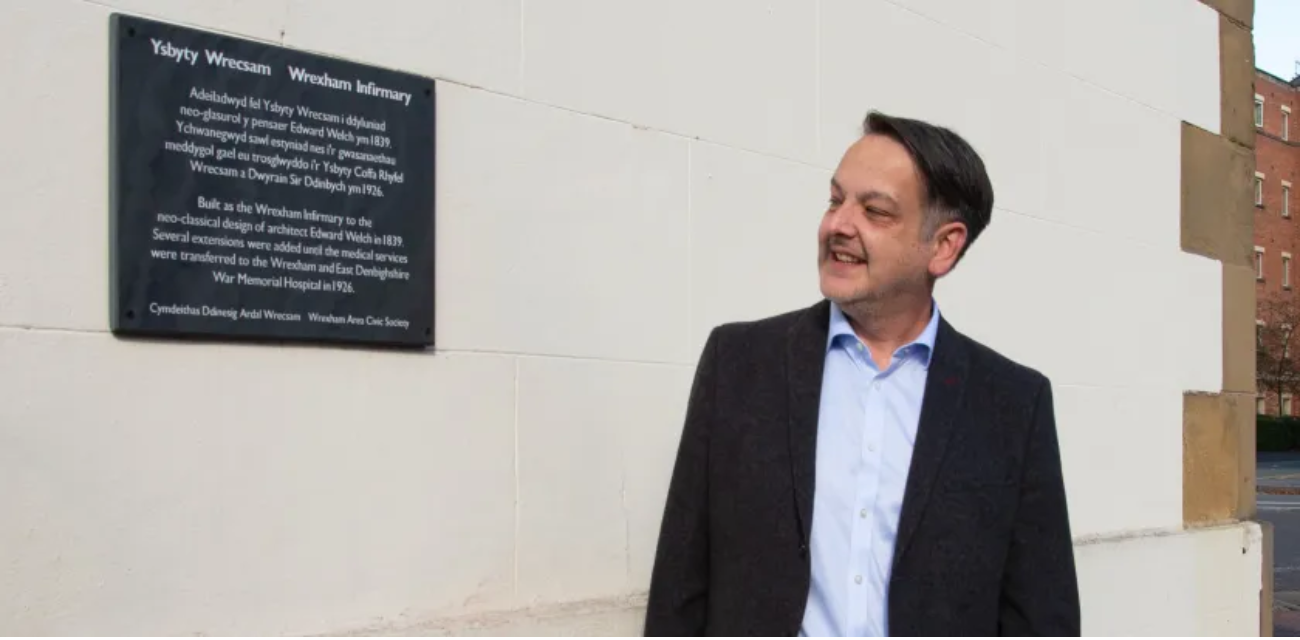A new commemorative plaque was recently unveiled in Wrexham to honor the Old Infirmary’s crucial role in the city’s healthcare history. Wrexham Member of Parliament, Andrew Ranger, led the inauguration at the site, now home to Wrexham University’s Art College on Bradley Road.
Installed by the Wrexham Area Civic Society, the plaque is one of several placed across the city to acknowledge buildings of historical importance. The original infirmary dates back to the 1830s, when funds were raised to establish a formal medical facility on Regent Street, then an area under development toward the railway station.
This infirmary grew over the decades, adding wings and new buildings, including Hope House, now recognized as the Wrexham Lager Club, which once housed the infirmary’s nursing staff. For nearly a century, the infirmary served the Wrexham community until it was replaced by the Wrexham and East Denbighshire War Memorial Hospital in 1926. Afterward, the building transformed into the North Wales School of Science and Art and eventually became part of the Denbighshire Technical College.
The small ceremony was attended by key figures from the Civic Society, including President Alister Williams and Chairman Geoff Foy, along with Mike Hamer, Estates Manager for the university. A spokesperson for the Wrexham Area Civic Society expressed gratitude to Andrew Ranger for his support, also acknowledging a generous legacy from former President Tudor Owen, which helped fund the plaque installation.
This tribute serves as a reminder of the Old Infirmary’s contributions to Wrexham, from providing essential medical care to becoming a site of cultural and educational development in the heart of the city.







